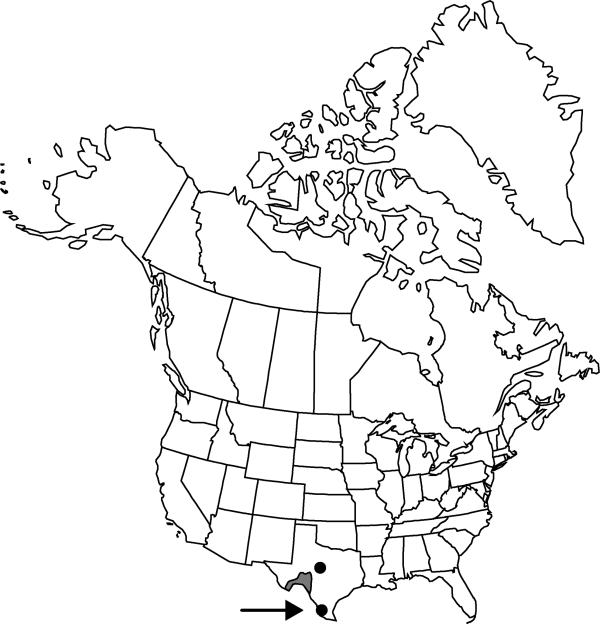Grusonia schottii
Phytologia 26: 176. 1973.
Shrubs, forming mats, 7.5–9 cm. Roots diffuse. Stem segments clavate, (2–)3.5–6.5 × (1.5–)2–3 cm; tubercles 8–20 mm, 1–3.5 times longer than wide, not or little obscured by spines; areoles 2.5–4 mm in diam.; wool white to yellowish. Spines 11–17 per areole, mostly in distal areoles, spreading to deflexed, white, tan, or red-brown, longest 3–7 cm; major 3 abaxial spines divergent or deflexed, tan to brown, flattened to angular-flattened, sharp edged; major 2–3 adaxial spines ascending-divergent, red-brown, subterete to angular-flattened. Glochids adaxial in areole, yellowish white to yellow, to 7 mm. Flowers: inner tepals bright yellow, ± 20 mm; filaments yellow; style cream; stigma lobes cream or tinged pink. Fruits yellow, cylindric to ellipsoid, 30–50 × 10–30 mm, fleshy, spineless (sometimes with 3–6 white or red spines to 6 mm), yellow glochidiate; areoles 25–35. Seeds yellowish white to yellow, 4.5–5 × 3.5 mm, smooth. 2n = 44.
Phenology: Flowering late spring–early summer (Jun–Jul).
Habitat: Chihuahuan Desert, sandy or gravelly flats, low hills
Elevation: 700-1200 m
Distribution

Tex., Mexico (Coahuila).
Discussion
Plants restricted to clay soils in Big Bend National Park, Brewster County, Texas, with more spines per areole than Grusonia schottii, have been named G. densispina (Ralston & Hilsenbeck) Pinkava. Much additional study is required to determine the relationship between such plants and G. schottii.
Selected References
None.